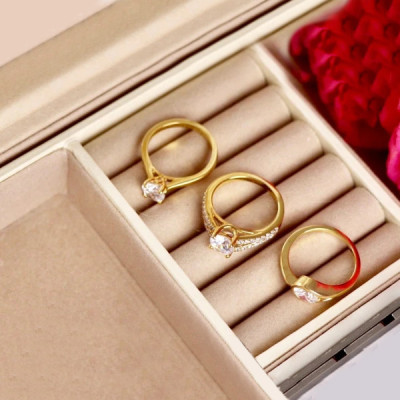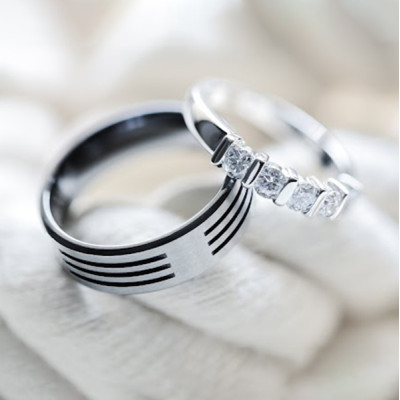Lab-Grown Diamond Buying Guide: A Comprehensive Resource
Welcome back to Abelini Insights, where today we take you on an exploration into lab-grown diamonds – that being diamonds cultivated in controlled laboratory environments rather than naturally grown diamonds mined from deep in the Earth.
Lab-grown diamonds are created using advanced technological processes and ingenious scientific methods that mimic the development of natural diamonds over millions of years. But why are more and more jewellery buyers opting for lab-grown diamonds over their natural equivalent?
Firstly, the cost of lab-grown diamonds is typically cheaper. This affordability opens up new possibilities for those seeking to acquire stunning diamond jewellery without breaking the bank. But more than cost, it’s about making ethically and environmentally conscious buying decisions.
Lab-grown diamonds are the clear choice for jewellery lovers who value ethics, ensuring they remain clear of the various controversies that can surround the mining industry, worker welfare, conflict diamonds and more. They also feature a smaller environmental footprint, with lab-grown diamond production generating significantly fewer carbon emissions and demanding less energy than traditional diamond mining.
Interested? We don’t blame you!
Lab-grown diamonds present diamond jewellery buyers with a captivating blend of affordability, ethical integrity and environmental responsibility that cannot be ignored. So, grab a brew and join us as we uncover more about these mesmerising, man-made gems.
Understanding the Basics: Lab-Grown vs. Natural Diamonds

We see a fascinating duality between those diamonds that emerge naturally from the depths of the Earth and those meticulously cultivated in laboratory settings. Let's take a closer look at the differences between lab-grown diamonds and their natural counterparts.
1. Origin
Natural diamonds are formed over millions of years under immense pressure and heat within the Earth's mantle. They are as ancient and esteemed as the planet we call home.
Conversely, lab-grown diamonds are the result of cutting-edge scientific processes that in controlled laboratory environments replicate natural diamond-growing conditions – a modern twist on this timeless gem that has for millennia transfixed us.
2. Environmental Impact
The reality is that traditional diamond mining leaves a significant environmental footprint. The extraction of natural diamonds demands land disruption, water usage and energy consumption – all of which can lead to habitat destruction and pollution.
In contrast, lab-grown diamonds are celebrated for making comparatively minimal environmental impact. Producing diamonds in a lab needs less energy, generates fewer carbon emissions and reduces the need for land and water. To the eco-conscious consumer, they are the more sustainable choice.
3. Cost
Ah, the key question when it comes to acquiring diamonds: how much does it cost for me to shine?
Natural diamonds often come with a hefty price tag reflective of rarity and demand. Conversely, lab-grown diamonds tend to be more affordable, thanks to the efficiency and scalability of their production process. With lab-grown diamonds, it doesn’t cost the Earth to care about it!
So, while natural diamonds offer age-old allure and geological heritage, lab-grown diamonds are a contemporary alternative that is ethically sound plus environmentally responsible. And now that we’re clued up on their background, let’s explore the lab-grown diamond buying process.
The Ultimate Guide to Lab-Created Diamonds

Setting Your Budget
Before jumping into your journey to find the perfect lab-grown diamond for you, you must set (and stick to) a realistic budget.
1. Assess Your Finances
Take a close look at your financial situation and define just how much you're comfortable spending on your lab-grown diamond jewellery. Consider factors such as income, savings, and any other financial obligations you may have. You don’t want to overextend yourself!
2. Research Pricing
Familiarise yourself with current market prices for lab-grown diamonds of different sizes, cuts and qualities. This will provide a rough outline of the quality of lab-grown diamond you should expect for your ideal budget.
3. Consider Additional Costs
Remember to account for any additional costs associated with purchasing a lab-grown diamond such as setting fees, taxes or insurance. These expenses add up, so it's best to budget for them accordingly.
4. Remain Flexible
A core budget is key but you should factor in some flexibility within that range. You may discover a lab-grown diamond that slightly exceeds your budget but offers exceptional value for money. In such cases, it may be worth stretching your budget to secure the very best example.
5. Consider Financing Options
Those with limited budgets can also explore flexible financing options that enable them to acquire fantastic examples they can pay off comfortably over time – just like we do here at Abelini.
To discover more about our financing options simply get in touch.
Choosing the Right Diamond
Now that you've set your ideal lab-grown diamond budget, it's time to choose the perfect example. As always, you should consider the 4Cs (Cut, Colour, Clarity and Carat). These key factors to ensure you consider all bases and end up with a few final options that meet your exact needs.

Cut
The cut of a diamond plays a crucial role in its brilliance and sparkle. A well-cut diamond will reflect light beautifully in a dazzling display of brilliance.
Consider your personal preferences and the style of jewellery you're envisioning when selecting a diamond shape. Popular diamond shapes include round, princess, cushion, oval and pear – each with its unique characteristics and appeal.

Colour & Clarity
Colour and clarity grades define the quality of a diamond's appearance. In lab-grown diamonds, colour and clarity grades are assessed using the same criteria as natural diamonds. When choosing a lab-grown diamond, opt for colour and clarity grades that align with your preferences and budget.
Slight variations in colour and clarity can significantly impact the overall appearance of the diamond – so choose wisely!
Carat Weight

Carat weight refers to the size of a diamond and is one of the most significant factors influencing its cost. Larger diamonds with higher carat weights tend to command higher prices, so strike a balance between size and budget. To get the best value for money, we often recommend prioritising cut, colour and clarity over carat weight.
Carefully consider the above factors and set a realistic budget to confidently select the perfect lab-grown diamond for your needs. With our prices, it may even exceed your expectations! For more info on the 4Cs of diamond shopping, visit our Ultimate Diamond Jewellery Buying Guide.
Selecting the Setting and Metal
Next up, it’s time to choose the perfect setting and metal for your lab-grown diamond. A great setting and metal are essential to enhance the beauty of your diamond and create a stunning piece of jewellery that reflects your style at its sharpest.

Enhancing Diamond Appearance
Setting plays a crucial role in showcasing the sparkle of your lab-grown diamond. A well-designed setting will secure the diamond firmly whilst inviting maximum light to enter and reflect off the stone, thus amplifying its beauty.
Additionally, the choice of metal can complement the diamond's colour and clarity, further enhancing its overall appearance.

Expressing Personal Style
The setting and metal you choose will also contribute to your expression of personal style and aesthetics. A classic solitaire setting for timeless elegance? A dazzling halo setting for added sparkle? Or a delicate pave setting for a touch of glamour?
Durability & Maintenance

When selecting a metal for your diamond's setting, consider factors like durability and maintenance. Platinum is known for its strength and makes an excellent choice for those seeking a durable, long-lasting metal.
Overview of Settings
1. Solitaire:
A classic, timeless setting featuring a single diamond held in place by prongs or a bezel. Perfect for showcasing the beauty of your lab-grown diamond without distractions.
2. Halo:
A popular choice for adding extra sparkle and glamour to your lab-grown diamond. The central stone is surrounded by a ring of smaller diamonds or other gemstones to create a dazzling halo effect.
3. Pave:

In this setting, small lab-grown diamonds are set closely together to cover the surface of the band, creating a continuous sparkle. Pave settings are perfect for adding brilliance and texture to your lab-grown diamond jewellery.
Overview of Metals

Platinum
Known for its durability and purity, platinum is a popular choice for lab-grown diamond rings and other fine jewellery. Its natural white hue complements the brilliance of your diamonds as well as requires minimal maintenance.

Gold
Yellow gold, white gold and rose gold each offer their unique strain of versatility and warmth, empowering you to choose the metal that suits your skin tone and personal style best. Gold is available in different carats, with 18k and 14k being the most common choices for backing lab-grown diamond jewellery.
Selecting the right setting and metal is essential to enhance the appearance of your lab-grown diamond and create jewellery that reflects your unique style. From a classic solitaire setting in platinum to a dazzling halo setting in rose gold, we at Abelini have endless options of lab-grown diamond jewellery to suit your unique preference.
Check the Diamond Certification
When purchasing lab-grown diamond jewellery, it is imperative to verify the certificates that accompany the piece. These certificates are where you will find essential information regarding the diamond's characteristics, quality and origin.
They offer peace of mind to the buyer – for without proper certification, there is no guarantee of the diamond's authenticity or ethical sourcing. At Abelini, every lab-grown diamond we sell features full certification.
1. Reliable Certification Entities
The two widest recognised, most reliable certification entities for lab-grown diamonds are the International Gemological Institute (IGI) and the Gemological Institute of America (GIA). These organisations are renowned for their rigorous testing procedures and comprehensive grading standards – making their certificates highly trusted in the industry.
2. Importance of Certificates
a. Authenticity:
An IGI or GIA certificate serves as proof of a diamond's authenticity, confirming that it is indeed a lab-grown diamond and not a synthetic or treated stone.
b. Quality Assurance:
The certificate provides detailed information about the diamond's 4Cs: cut, colour, clarity and carat weight. This allows buyers to make informed decisions based on the diamond's quality characteristics.
c. Ethical Sourcing:
Certification also ensures that a lab-grown diamond has been ethically sourced and manufactured, free from involvement in unethical practices like conflict mining.
d. Resale Value:
Having a certified lab-grown diamond increases resale value and makes it easier to sell or trade in the future!
Other Considerations

When choosing a vendor for your lab-grown diamond purchase, there is more to consider than the diamond itself. Here are some factors we recommend when seeking out a reputable lab-grown diamond vendor such as ourselves.
1. Return Policies:
Review the vendor's return policies to ensure they offer satisfactory return or exchange processes. Look for vendors with flexible return windows and transparent refund procedures, so that you do not have to worry if you are not fully satisfied with your purchase.
2. Warranties:
Check if the vendor provides warranties or guarantees on their lab-grown diamonds. A warranty can offer added peace of mind by covering manufacturing defects, diamond damage and other issues within a specified post-purchase period.
3. Certifications:
Verify that the vendor works with certified lab-grown diamonds and provides appropriate documentation from reputable certification entities such as the IGI or GIA.
4. Customer Service:
Evaluate the vendor's customer service reputation by reading reviews and customer testimonials. A vendor with responsive, knowledgeable customer service reps will be appreciated if you have concerns during or following your purchase.
5. Ethical Practices:
Choose a vendor that prioritises ethical sourcing and sustainability in their business practices. Look for vendors who champion supply chain transparency and demonstrate a commitment to ethical, responsible lab-grown diamond production.
6. Educational Resources:
Opt for a vendor offering comprehensive educational resources about lab-grown diamonds. This can include info regarding the 4Cs of diamonds plus the differences between lab-grown and natural diamonds. You want to feel informed in your purchase.
7. Customisation Options:
If you're looking to create a custom piece of jewellery, inquire about the vendor's customisation options and design services. Choose a vendor that offers a wide range of setting styles and metal choices to suit your preferences and style.
By considering these factors when selecting a vendor, you can ensure a positive and satisfying experience when purchasing your lab-grown diamond.
Care and Maintenance of Lab-Grown Diamonds

Lab-grown diamonds – just like their natural counterparts – are durable and resilient gems. They are one of the world’s hardest materials. However, they still require proper care to preserve their beauty and sparkle…
1. Regular Cleaning:
Clean your lab-grown diamond regularly to remove dirt, oils and other debris that can dull its appearance. Use a mild solution of warm water, soap and a soft-bristled brush to gently scrub the diamond. Rinse thoroughly with clean water and pat dry with a soft cloth.
2. Avoid Harsh Chemicals:
Avoid exposing your lab-grown diamond to harsh chemicals like bleach and other household cleaners, which will damage the diamond's surface or metal setting. Remove jewellery before swimming, showering or engaging in household chores to prevent exposure to these chemicals.
3. Store Properly:
When not wearing your lab-grown diamond jewellery, we recommend storing it in a clean, dry place away from other jewellery to prevent scratches. Consider storing each piece in a dedicated soft pouch or jewellery box to avoid tangling or rubbing with other items.
4. Regular Inspections:
Periodically inspect your lab-grown diamond jewellery for signs of damage or loose settings. As soon as you notice issues like loose stones or bent prongs, engage your local reputable jeweller to book it in for inspection and repairs.
5. Professional Cleaning:
Consider having your lab-grown diamond jewellery professionally cleaned and inspected at least once yearly. A professional cleaning will remove more stubborn dirt and residue, plus ensure that settings are secure and in good condition.
6. Avoid Impact:
Lab-grown diamonds are durable but may still chip or scratch under heavy impact. Avoid wearing your jewellery during activities like sports or heavy lifting that could potentially damage the stones.
7. Insurance Coverage:
Consider insurance coverage for your lab-grown diamond jewellery to protect against loss, theft or damage. If you have insurance already, it is worth checking with your provider that jewellery is adequately covered under your policy!
Follow these simple care and maintenance tips – anticipating rather than reacting to damages – and you will ensure that your lab-grown diamond jewellery remains in pristine condition with as-new sparkle for decades if not centuries to come.
Lab-Grown Diamonds – What’s Not to Love?

And just like that, we've explored the fascinating world of lab-grown diamonds and learned exactly why each day they grow more popular amongst jewellery enthusiasts. Lab-grown diamonds are modern, ethical and sustainable, doing less damage to your wallet and the environment alike.
As you embark on your journey to find the perfect lab-grown diamond, we encourage you to consider your values and preferences. Whether you champion affordability, ethical sourcing, environmental sustainability or simply the beauty of the diamond itself – your choices matter.
By keeping your choices in clear focus, you can make sure your new lab-grown diamond purchase is a confident, informed decision that suits your values as much as it does your personal style.
Check out our stunning range of lab-grown diamond jewellery here and do not hesitate to reach out to our friendly experts with any queries you may have.

Article written by Nilesh
 Trustpilot
Trustpilot



